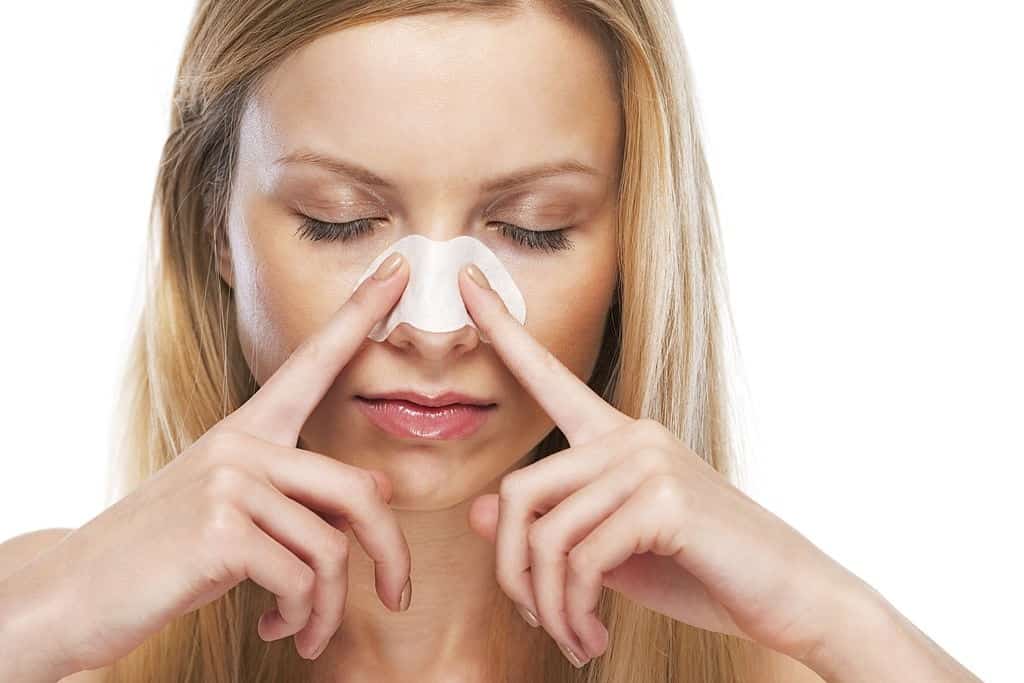
Blackheads are unsightly – we all know that.
But if you want to get rid of these nasty-looking things, there is a natural solution to that:
Pore strips.
How often can you use pore strips for blackheads? Are they safe? Or are there side effects?
If you are confused about what to do with blackheads and how you can address these quickly, naturally, and effectively, keep reading to learn more about pore strips. Here, we lay out the facts on pore strips safety and how often you can actually use them without harming your skin.
What is a Pore Strip?
First things first. What exactly is a pore strip, anyway?
On the outside, a pore strip looks more like a bigger and wider band-aid. But there is more to this tool than its adhesive quality.
It is a handy tool that you apply on an affected area (i.e. where you blackheads are), then you let it sit on your skin for 10 minutes. Afterward, you peel it away and boom – your blackheads are supposed to go with it.
You may initially assume that the pore strip only captured your small hairs but in reality, these are not hairs. Instead, these are blackheads, dead skin, and sebum that clog up your pores.
A good analogy to this is like when you wax your body hair. Pore strips remove dead skin cells and not hair.
Now, there are many types and varieties of pore strips but they all have the same basic materials. For instance, the strip is a woven substrate that’s non-soluble. It has a fabric feel to it that also looks somewhat like a paper.
When you look at the underside portion, there is a polymer component to the strip. It is this material that attaches to the sebum or oil plugs present in your pores. Lastly, the pore strip also comes with a resin that supports the patch to stick to your nose.
As we have mentioned, strips come in different varieties. There are new additions added to a regular pore strip to enhance their effects. Some brands have charcoal-infused to the strips, and these are intended to absorb the excess oil.
There are also pore strips that have a moisturizing effect. For people who have hypersensitive skin, this is a pleasant addition to the strips since it does not strip away moisture. As for other brands, they may come in colorants and fragrances. However, we do not recommend these kinds of pore strips for sensitive skin as they may cause allergies.
How to Use a Pore Strip
There are two steps to using a pore strip.
First, you need to wet it to make it sticky. This allows it to latch on to your skin and absorb the dead skin cells.
As you leave it on your skin, it dries up, which gives it that outstanding pulling power.
When you read the box, there are directions clearly indicated in the package. First, you need to wet your nose. It should be a good amount of water to make sure it is nice and moist. Then, peel the backing on the pore strip and smooth it gently onto the affected area. Start from the nose bridge and then gently work your way out.
Leave the strip on for about 10 up to 15 minutes. This will allow it to absorb whatever needs to be removed from the skin.
You might be wondering – why do you need to wet your nose?
The secret to the powerful adhesive power of the strip is in the activation of the polymer. This is what water does to it as it offers a positive charge or pulls to the material that sticks to the clogged pores.

During the time the strip stays on your skin, the polymers that have been activated adhere well to your skin’s outermost layer. This also includes the hair and excess sebum that are removed once you peel off the strip.
Now, what happens when you remove a dried up pore strip?
And the most important thing – how do you remove it properly?
The best way to do it is to begin from the outer to the inner flanks. Be as slow and gentle as possible as peeling it too fast will end up hurting you. As you peel it off your skin, you will notice those dead skin cells sticking to the strip, which means it’s working!
Those tiny little dots are what we call keratotic plugs that are your dead skin cells, oil, hair, and dirt. In other words, these are the things that make up your blackheads, or the oxidized oil that clog your pores.
Read more: The 4 Effective Ways on How to Prevent Whiteheads
How Often Can You Use Pore Strips?
While pore strips can help remove blackheads, they will not put an end to your acne problems.
They do help smoothen your skin because the dirt and excess oils are gone. But it is not a form of treatment at all to your blackhead woes.
Eventually, you will have to undergo a more in-depth exfoliation from a professional since blackheads cannot fix this problem completely.
Using pore strips too often can also be harmful to your skin. You may end up looking as though you have undergone a chemical peel – with your skin turning red and irritated.
You will need to limit your usage of pore strips to once a week and no more than that.
Remember that some areas of the face can be more sensitive than others. The cheeks, for instance, are thinner than the skin on your nose. This is why your cheeks may end up looking redder when you use your strips on this portion of the face.
With all these things in mind, you should be able to use pore strips safely and effectively to get maximum benefits to your skin.

Hi Everyone, BeYoungAholic’s aim is to help women who have lost their self-confidence because of the way they look. We will provide you tips and bits of advice on how to take care of yourself and maintain your youthful look. So, Enjoy the blog!
